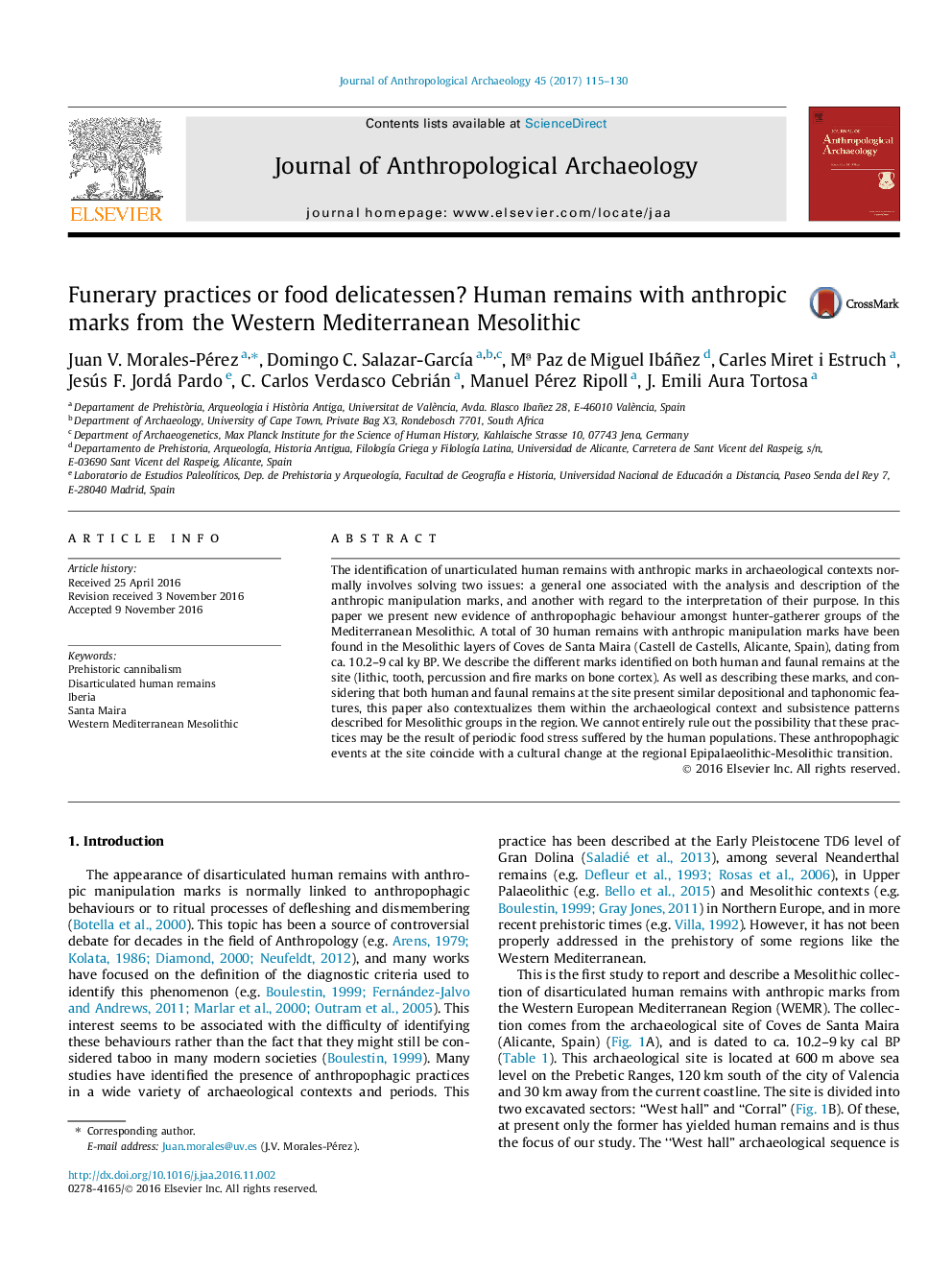| کد مقاله | کد نشریه | سال انتشار | مقاله انگلیسی | نسخه تمام متن |
|---|---|---|---|---|
| 5111925 | 1483846 | 2017 | 16 صفحه PDF | دانلود رایگان |
عنوان انگلیسی مقاله ISI
Funerary practices or food delicatessen? Human remains with anthropic marks from the Western Mediterranean Mesolithic
دانلود مقاله + سفارش ترجمه
دانلود مقاله ISI انگلیسی
رایگان برای ایرانیان
کلمات کلیدی
موضوعات مرتبط
علوم انسانی و اجتماعی
علوم انسانی و هنر
تاریخ
پیش نمایش صفحه اول مقاله

چکیده انگلیسی
The identification of unarticulated human remains with anthropic marks in archaeological contexts normally involves solving two issues: a general one associated with the analysis and description of the anthropic manipulation marks, and another with regard to the interpretation of their purpose. In this paper we present new evidence of anthropophagic behaviour amongst hunter-gatherer groups of the Mediterranean Mesolithic. A total of 30 human remains with anthropic manipulation marks have been found in the Mesolithic layers of Coves de Santa Maira (Castell de Castells, Alicante, Spain), dating from ca. 10.2-9Â cal ky BP. We describe the different marks identified on both human and faunal remains at the site (lithic, tooth, percussion and fire marks on bone cortex). As well as describing these marks, and considering that both human and faunal remains at the site present similar depositional and taphonomic features, this paper also contextualizes them within the archaeological context and subsistence patterns described for Mesolithic groups in the region. We cannot entirely rule out the possibility that these practices may be the result of periodic food stress suffered by the human populations. These anthropophagic events at the site coincide with a cultural change at the regional Epipalaeolithic-Mesolithic transition.
ناشر
Database: Elsevier - ScienceDirect (ساینس دایرکت)
Journal: Journal of Anthropological Archaeology - Volume 45, March 2017, Pages 115-130
Journal: Journal of Anthropological Archaeology - Volume 45, March 2017, Pages 115-130
نویسندگان
Juan V. Morales-Pérez, Domingo C. Salazar-GarcÃa, Mª Paz de Miguel Ibáñez, Carles Miret i Estruch, Jesús F. Jordá Pardo, C. Carlos Verdasco Cebrián, Manuel Pérez Ripoll, J. Emili Aura Tortosa,